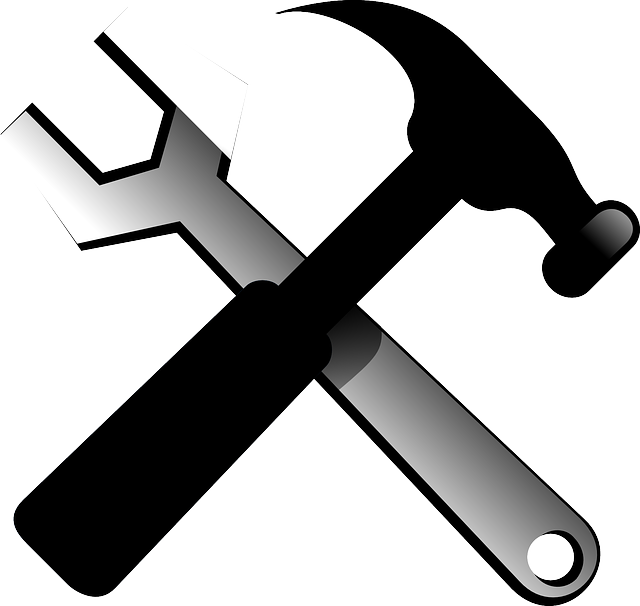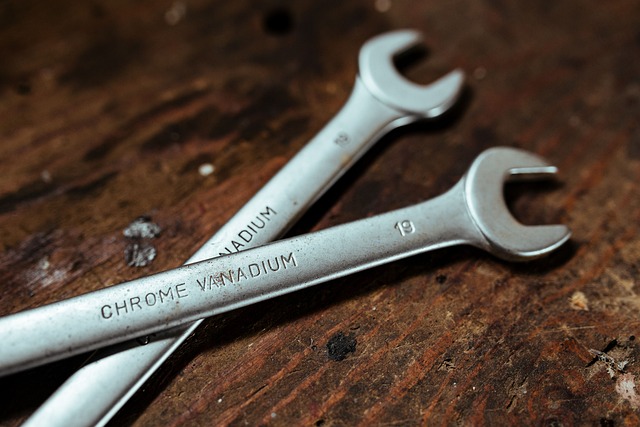When an HVAC system develops a refrigerant leak, prompt detection and repair are crucial for efficient system operation and safe functioning. HVAC technicians employ various methods, including visual inspections, ultraviolet leak detectors, and electronic devices that sense gas leaks to identify the source of the issue. Once located, the compromised components are replaced, the contaminated refrigerant is safely removed and disposed of, and the system is recharged with the correct type and amount of refrigerant as specified by the manufacturer. Regular maintenance and expert inspections are vital for preventing minor leaks from escalating and for ensuring the HVAC system operates at peak performance, extending its lifespan and enhancing comfort.
In repairing refrigerant leaks, technicians must handle chemicals like R-22 or R-410A with care due to their environmental impact and potential health risks. The EPA enforces strict regulations on refrigerant handling, emphasizing the importance of certified professionals for HVAC services. Leak detection involves advanced tools such as infrared technology and UV dye detection to pinpoint leaks without causing additional damage.
Safety is paramount during HVAC repair, with technicians wearing personal protective equipment (PPE) and adhering to safety protocols to protect themselves and the environment from exposure to harmful refrigerants. All repairs are conducted with precision to avoid future leaks or contamination. Adherence to local regulations on refrigerant disposal and recycling is essential for environmental protection. Post-repair, systems are recharged correctly to maintain energy efficiency and performance, ensuring that the HVAC system operates safely and effectively. Regular maintenance by qualified professionals is key to preventing leaks and ensuring the longevity of your HVAC system.
When your HVAC system isn’t performing as it should, diagnosing and addressing refrigerant leaks is paramount. This comprehensive guide delves into the intricacies of troubleshooting and recharging HVAC systems, ensuring homeowners and technicians alike are well-equipped to handle such issues effectively and efficiently. From identifying leaks and understanding the critical function of refrigerants to mastering the safety and technical aspects of repair, we’ll cover the essential steps and maintenance tips necessary for a successful HVAC repair. Additionally, we’ll explore the environmental regulations and standards governing refrigerant use, helping you stay compliant while optimizing system performance.
- Identifying Refrigerant Leaks in HVAC Systems
- Understanding the Role of Refrigerants in HVAC Repair
- Tools and Techniques for Locating Refrigerant Leaks
- Common Causes of Refrigerant Leaks in HVAC Systems
- Safety Precautions When Handling Refrigerants
Identifying Refrigerant Leaks in HVAC Systems

When a refrigerant leak occurs in an HVAC system, prompt identification and repair are crucial for restoring the unit’s efficiency and ensuring safe operation. A knowledgeable HVAC repair technician employs several methods to detect these leaks, including visual inspections and advanced tools like ultraviolet (UV) leak detectors that reveal fluorescent tracer leaks under UV light. During a system inspection, signs of moisture or oil around joints, fittings, and connections are telltale indicators of potential leaks. Additionally, an HVAC repair specialist will listen for hissing sounds that often accompany refrigerant escapes. The use of electronic leak detectors can also pinpoint the exact location of the leak by identifying the presence of refrigerant gases. Once a leak is detected, the technician will trace it to its source, which could be anywhere from the lineset, coils, or heat exchanger to the system’s accessories like valves and gauges. After locating and identifying the leak, the next step in HVAC repair involves carefully removing the contaminated refrigerant and replacing the faulty components before recharging the system with the correct amount of refrigerant as per manufacturer’s specifications. This process not only seals the system against further loss but also ensures that the HVAC unit operates at peak performance, extending its lifespan and maintaining optimal comfort levels for the occupants. Regular maintenance and timely inspections by a qualified professional can prevent minor leaks from escalating into costly repairs or system failures, making HVAC repair a critical aspect of home upkeep.
Understanding the Role of Refrigerants in HVAC Repair

In HVAC repair, refrigerants play a pivotal role in the transfer of heat, which is central to both cooling and heating systems. These chemical compounds are designed to absorb and transport thermal energy between your home and the outside environment. When a system is functioning correctly, it maintains the desired temperature by circulating refrigerant through a series of coils and components. Understanding the properties of the specific refrigerant used in an HVAC system is crucial for effective repair and maintenance. Technicians must accurately diagnose leak sources to prevent refrigerant loss, which can impair system performance and efficiency. Identifying the type of refrigerant, such as R-22 or the more environmentally friendly R-410A, is essential, as each has different handling procedures and environmental impacts. Recharging an HVAC system with the correct amount of refrigerant after repair or during installation is a precise task that requires both skill and adherence to safety protocols. The EPA mandates that only certified professionals handle refrigerants due to their potential to harm the ozone layer, emphasizing the importance of professional expertise in HVAC repair and maintenance. Regular inspection and leak detection are key components of upkeep, ensuring the refrigerant remains at optimal levels for efficient operation and long-term system longevity.
Tools and Techniques for Locating Refrigerant Leaks

When it comes to identifying refrigerant leaks within an HVAC system, possessing a combination of specialized tools and honed techniques is paramount for effective repair. Technicians typically start with a visual inspection of the system’s components, looking for signs such as ice build-up, which can indicate low refrigerant levels. Infrared cameras are instrumental in this process, allowing technicians to detect temperature differences that point to leakage points. The application of ultraviolet dye and the use of UV leak detectors can further aid in locating leaks, as these tools make invisible leaks visible under blacklight.
Once a leak is pinpointed, the HVAC repair process involves removing the contaminated refrigerant from the system and replacing it with fresh, clean refrigerant. This step is crucial for maintaining the efficiency and performance of the HVAC unit. The process of recharging, or evacuating and reinstalling refrigerant, should be carried out with precision, using a refrigerant recovery machine to ensure all residual gases are removed before recharging. The use of a vacuum pump is also essential to create a vacuum within the system, ensuring that no moisture remains that could cause future leaks or reduce system performance. Accurate measurement and handling of refrigerant are key, as they directly affect the system’s integrity and the comfort of the occupants. HVAC technicians trained in these methods can effectively diagnose and address refrigerant leaks, ensuring the longevity and proper functioning of the HVAC system.
Common Causes of Refrigerant Leaks in HVAC Systems

When it comes to refrigerant leaks in HVAC systems, there are several common causes that can lead to a system’s inefficiency or failure. One prevalent issue is natural system aging; as components age, seals and joints can become brittle or compromised, resulting in leaks. Another frequent cause is mechanical wear and tear. Compressors, condensers, and evaporator coils that have been overworked may develop small cracks or pinholes where refrigerant can escape. Inadequate installation can also lead to leaks; improperly connected fittings or hoses without proper sealing can cause immediate or future refrigerant loss. Additionally, environmental factors such as corrosion from moisture or exposure to harsh chemicals can degrade system components, leading to leak points. It’s imperative for HVAC technicians to conduct thorough inspections and repairs, employing advanced techniques like ultraviolet dye detection to identify leaks and using appropriate materials for repair to prevent future occurrences. Regular maintenance by qualified professionals is key in the prevention of refrigerant leaks and maintaining the optimal performance of HVAC systems. For effective HVAC repair, it’s crucial to address these common causes promptly and with precision to avoid long-term issues and energy loss.
Safety Precautions When Handling Refrigerants

When addressing refrigerant leaks in HVAC systems, safety is paramount. Technicians engaging in HVAC repair must adhere to strict safety protocols due to the nature of refrigerants. These substances are not only potent greenhouse gases but also can be hazardous to human health if mishandled. Safety precautions begin with proper training and certification, ensuring that only qualified individuals handle refrigerants. Personal protective equipment (PPE), including gloves and eye protection, is mandatory to safeguard against direct contact or accidental splashes. It’s crucial to work in well-ventilated areas to minimize the risk of inhalation exposure, as some refrigerants can be toxic. Leak detection involves the use of specialized equipment to accurately identify the source of a leak without causing further damage or exposure. Once a leak is confirmed, repair must proceed with care to avoid additional leaks or contamination. Throughout the repair process, adherence to local regulations regarding the disposal and recycling of refrigerants is essential to prevent environmental harm. After repairs are complete and the system is deemed leak-free, recharging the system with the correct type and quantity of refrigerant as per manufacturer’s specifications is necessary for the HVAC system to function optimally and efficiently. Always remember that safety during HVAC repair is not just about following guidelines; it’s about protecting oneself, the environment, and ensuring the longevity and performance of the HVAC system.
In wrapping up our exploration of HVAC repair, it’s clear that identifying and addressing refrigerant leaks is a critical aspect of maintaining an efficient and effective cooling system. Understanding the role of refrigerants within these systems, coupled with the proper tools and techniques for leak detection, equips homeowners and technicians alike with the necessary knowledge to ensure safe and successful repairs. By staying vigilant and proactive in monitoring HVAC performance and adhering to safety protocols when handling refrigerants, we can extend the lifespan of our systems and safeguard the environment. Remember, regular checks for leaks and timely recharges are integral to the longevity and reliability of your HVAC system’s operation throughout the year.
